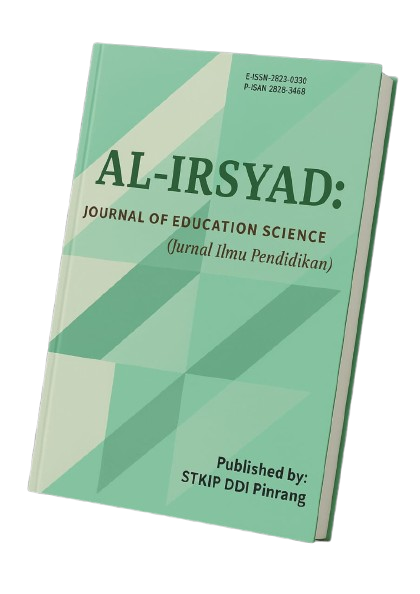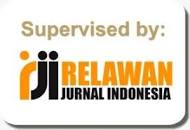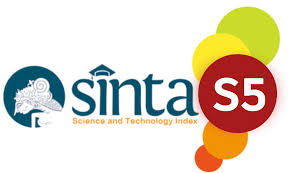PARENT AND TEACHER CHALLENGES IN NAVIGATING THE DIGITAL ERA
DOI:
https://doi.org/10.58917/aijes.v4i2.334Kata Kunci:
Bronfenbrenner, Character Education, Digital Parenting, Islamic Education, Maqāṣid al-Shariʿah, Society 5.0, Teacher CompetenceAbstrak
The rapid advancement of digital technology in the era of Industrial Revolution 4.0 and Society 5.0 has fundamentally transformed the way families and schools’ function in educating children. Parents and teachers are increasingly confronted with complex challenges in guiding children amidst the influx of information, digital content, and internet-based learning. This article aims to analyze the roles of parents and teachers in responding to digital challenges, particularly in the context of Islamic education. Employing a qualitative approach through library research, the study synthesizes findings from academic literature, national surveys, and recent statistical data (2015–2024). The discussion is framed by Bronfenbrenner's Ecological Systems Theory and the Islamic framework of Maqāṣid al-Sharīʿah. Findings indicate a significant gap in digital literacy among parents and teachers, limited institutional readiness for digital pedagogy, and increasing exposure of children to harmful digital content. The article argues that current research often isolates the roles of parents and teachers, overlooking their synergistic potential in shaping children's character through a values-based framework. As a novelty, this study proposes a four-pillar tarbiyah model—parents, teachers, community, and the state—rooted in Islamic principles to promote digital ethics, character education, and spiritual development. This integrative approach is expected to serve as a practical and conceptual guide in constructing a holistic digital education ecosystem that aligns with Islamic values.
Referensi
Al-Qur’an al-Karim. (n.d.). The Qur’an: Arabic text with English translation (Trans. Abdullah Yusuf Ali). Islamic Book Service.
APJII. (2024). Laporan survei internet Indonesia tahun 2024. Asosiasi Penyelenggara Jasa Internet Indonesia. https://apjii.or.id/berita/d/apjii-jumlah-pengguna-internet-indonesia-tembus-221-juta-orang
Bronfenbrenner, U. (1979). The ecology of human development: Experiments by nature and design. Harvard University Press.
Common Sense Media. (2021). Teens and pornography: Key findings. https://www.commonsensemedia.org
Daniswara, A., & Faristiana, R. (2023). Parenting di era digital: Strategi pendampingan orang tua dalam penggunaan media digital oleh anak usia dini. Jurnal Obsesi: Jurnal Pendidikan Anak Usia Dini, 7(1), 145–157. https://doi.org/10.31004/obsesi.v7i1.2673
Fauzan, A. (2022). Transformasi digital dalam pendidikan Islam: Peluang dan tantangan. Jurnal Pendidikan Islam, 11(2), 145–160. https://doi.org/10.19109/jpi.v11i2.8593
GoodStats. (2025). Statistik penggunaan internet pada peserta didik usia sekolah. https://www.goodstats.id/articles/penggunaan-internet-anak-2025
Hendarman, H. (2019). Penguatan kompetensi digital guru dalam menghadapi era revolusi industri 4.0. Jurnal Pendidikan dan Kebudayaan, 4(2), 129–140. https://doi.org/10.24832/jpnk.v4i2.1117
Kamali, M. H. (2019). Maqasid al-Shariah made simple (2nd ed.). International Institute of Islamic Thought (IIIT). https://iiit.org/en/book/maqasid-al-shariah-made-simple/
Kemendikbudristek. (2021). Buku saku asesmen dan pembelajaran dalam kurikulum merdeka. Direktorat Jenderal GTK.
Kemendikbudristek. (2021). Laporan survei nasional guru dan platform digital pembelajaran. Direktorat Jenderal GTK. https://gtk.kemdikbud.go.id/
Kemendikbudristek. (2023). Laporan perkembangan pelatihan guru berbasis digital nasional. https://gtk.kemdikbud.go.id/
Koehler, M. J., & Mishra, P. (2009). What is technological pedagogical content knowledge (TPACK)? Contemporary Issues in Technology and Teacher Education, 9(1), 60–70
Livingstone, S., & Helsper, E. J. (2008). Parental mediation of children’s internet use. Journal of Broadcasting & Electronic Media, 52(4), 581–599. https://doi.org/10.1080/08838150802437396
Livingstone, S., & Helsper, E. J. (2017). Children, internet and risk in comparative perspective. Journal of Children and Media, 11(1), 1–5. https://doi.org/10.1080/17482798.2016.1268528
Liu, Y., Huang, J., & Wang, Y. (2024). Digital workload and teacher burnout in post-pandemic classrooms. Teaching and Teacher Education, 135, 104341. https://doi.org/10.1016/j.tate.2023.104341
Mishra, P. (2020). Considering contextual knowledge in the TPACK framework: The added value of teacher’s knowledge of students. Journal of Educational Computing Research, 58(6), 1232–1256. https://doi.org/10.1177/0735633119855600
Modecki, K. L., Goldberg, R. E., Wisniewski, P., & Orben, A. (2022). What is digital parenting? A systematic review of past measurement and blueprint for the future. Perspectives on Psychological Science, 17(3), 834–856. https://doi.org/10.1177/17456916211072458
Prensky, M. (2001). Digital natives, digital immigrants. On the Horizon, 9(5), 1–6.
Puentedura, R. R. (2020). SAMR and TPCK: Intro to advanced technology integration. http://hippasus.com/rrpweblog/
Rico, R., Sari, D. P., & Nugroho, A. (2023). Literasi digital orang tua dan perlindungan anak di era internet of everything. Jurnal Pendidikan Karakter, 13(1), 1–15. https://doi.org/10.21831/jpk.v13i1.55678
Rico, R., Sari, D. P., & Nugroho, A. (2023). Peran orang tua dalam mendampingi anak di era digital: Studi kasus pada siswa sekolah dasar di Semarang. Jurnal Ilmu Sosial, Pendidikan, dan Humaniora (JISPENDIORA), 2(2), 117–132. https://doi.org/10.56910/jispendiora.v2i2.650
Twenge, J. M. (2023). Generations: The real differences between Gen Z, Millennials, Gen X, Boomers, and Silents—and what they mean for America’s future. Atria Books.
Undang-Undang Republik Indonesia Nomor 27 Tahun 2022 tentang Perlindungan Data Pribadi.
UNICEF. (2021). Digital literacy and internet safety among Indonesian adolescents. https://www.unicef.org/indonesia/reports/literasi-digital-anak-indonesia
Wijoyo, A. (2020). Society 5.0 dan tantangan pendidikan karakter di era digital. Jurnal Ilmiah Pendidikan Pancasila dan Kewarganegaraan, 5(2), 100–112. https://doi.org/10.17977/um019v5i22020p100
Unduhan
Diterbitkan
Cara Mengutip
Terbitan
Bagian
Lisensi
Hak Cipta (c) 2025 Trisnawaty Trisnawaty, Fatimah HS, Syarifuddin Ondeng, Syahruddin Usman

Artikel ini berlisensi Creative Commons Attribution 4.0 International License.























